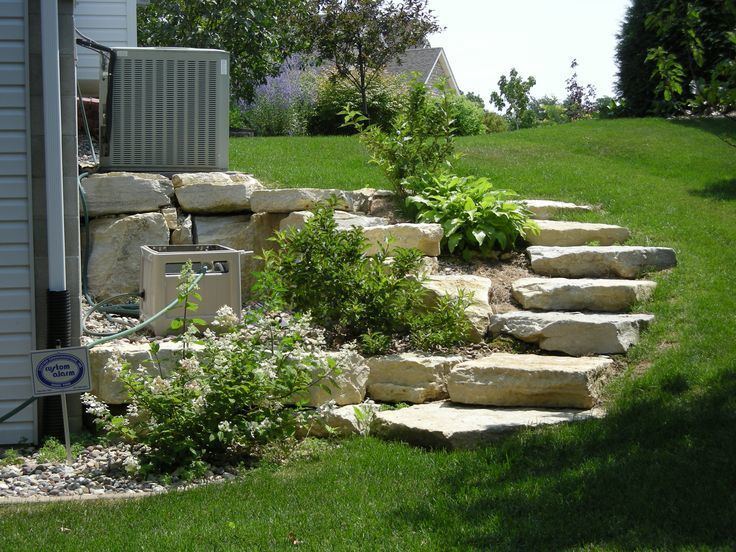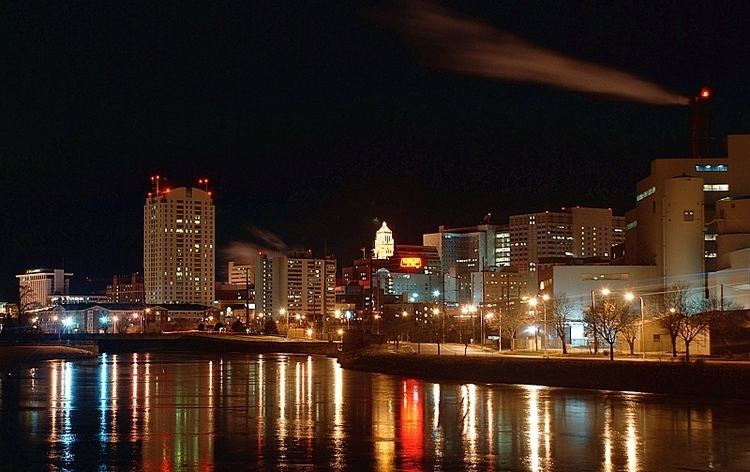Country State Mayor Ardell Brede (I) | Population 110,742 (2013) Area 54.75 sq mi Founded 1854 | |
 | ||
Points of interest Colleges and Universities Rochester Community and Technical College, University of Minnesota Rochester, Mayo Medical School, Mayo School of Health Sciences, Nova Academy of Cosmetology | ||
Unemployment rate 3.7% (Feb 2015) | ||
Map of Rochester, Minnesota
Rochester is a city in the U.S. State of Minnesota and is the county seat of Olmsted County. Located on the Zumbro River's south fork, the city has a population of 106,769 according to the 2010 United States Census. The U.S. Census Bureau estimated that the 2015 population was 112,225. It is Minnesota's third-largest city and the largest city located outside of the Minneapolis-St. Paul-Bloomington Metropolitan Statistical Area. As of 2015, the Rochester metropolitan area has a population of 213,873. It is the home of Mayo Clinic and one of IBM's largest facilities.
Contents
- Map of Rochester Minnesota
- Things to do in rochester minnesota weekly visitors event guide with trivia and prizes
- Things to do in rochester minnesota event guide with trivia and prizes
- History
- Geography
- Climate
- Demographics
- 2010 census
- Economy
- Destination Medical Center
- Arts and culture
- Parks and recreation
- Government
- Education
- Media
- Transportation
- Major highways
- Sports
- Awards and rankings
- Pescara seafood restaurant rochester mn general manager randall kahn
- References

Things to do in rochester minnesota weekly visitors event guide with trivia and prizes
Things to do in rochester minnesota event guide with trivia and prizes
History

Rochester was founded in 1854, and platted in 1855. Rochester developed as a stagecoach stop between Saint Paul, Minnesota, and Dubuque, Iowa. When the Winona and St Peter Railroad initiated service in October 1864, it brought new residents and business opportunities. In 1863, Dr. William W. Mayo arrived as the examining surgeon for draftees in the Civil War. The community was named after Rochester, New York.

On August 21, 1883, the Great Tornado demolished much of Rochester, leaving 37 dead and about 200 injured. As there was no medical facility at the time, Mayo and his two sons worked together to care for the wounded. Donations of $60,000 were collected and the Sisters of St. Francis, assisted by Mayo, opened a new facility named St. Marys Hospital in 1889. The Mayo practice grew and is today among the largest and most well-respected medical facilities in the world. Many famous people from around the world, including former Presidents Franklin D. Roosevelt, Harry S. Truman, George H. W. Bush, Gerald Ford, and Ronald Reagan, have visited Rochester as patients of the Mayo Clinic. Rochester has also been hit by two F4 tornadoes since 1950 (the first on May 10, 1953 and the other on September 16, 1962.) Rochester celebrated its sesquicentennial in 2004.
Geography

Rochester lies alongside the South Fork of the Zumbro River. According to the United States Census Bureau, the city has a total area of 54.75 square miles (141.80 km2), of which 54.59 square miles (141.39 km2) of it is land and 0.16 square miles (0.41 km2) is water. The city is located 85 miles (137 km) southeast of Minneapolis-St. Paul.

Rochester is in Olmsted County, one of only four counties in Minnesota without a natural lake. Artificial lakes exist in the area, including Silver Lake, a dammed portion of the South Fork Zumbro River just below the convergence with Silver Creek near the city center. Silver Lake was once used as a cooling pond when the coal-burning power plant was operated by Rochester Public Utilities at the lake. When operational, the RPU coal plant's heated water output prevented the lake from generally freezing over during the winter months; attracting large numbers of migrating giant Canada geese.
Rochester has many parks; the largest being Silver Lake and Soldiers Field. A major flood in 1978 led the city to embark on an expensive flood-control project that involved altering many nearby rivers and streams.
Climate
Rochester features a humid continental climate (Dfa/Dfb), with hot summers and very cold winters. The city features four distinct seasons. Rochester sees on average 30 inches (760 mm) of rainfall and 48 inches (120 cm) of snowfall per year. Significant snow accumulation is common during the winter months. Spring and fall are transitional seasons, with a general warming trend during the spring and a general cooling trend during the fall. However, it is not uncommon to see some snowfall during the early months of spring and the later months of fall. Rochester is the second windiest city in the United States, with wind speeds averaging 12.6 mph. January and April are the windiest months on average, according to The Weather Channel.
Demographics
According to the 2005–2007 American Community Survey conducted by the United States Census Bureau, there were 95,179 people, 39,203 households, and 23,831 families in the city.
There were 42,049 housing units. There were 39,203 households out of which 49.8% were married couples. About 31.6% had children under the age of 18. About 2.5% were made up of a male householder with no wife present and about 8.5% were made up of a female householder with no husband present. In addition, 39.2% of all households were non-family households and 32.6% of households were made up of householders living alone. And 8.7% of households were made up of someone living alone who was 65 years of age and over. The average household size was 2.37 and the average family size was 3.04.
As of the 2005–2007 American Community Survey, the median household income was $57,957 and the median family income was $74,467. The per capita income was $30,977. About 5.9% of families and 8.4% of the population were below the poverty line, including 11.5% of those under age 18 and 5.1% of those aged 65 or over.
As of the 2011-2015 American Community Survey, the median household income was $68,023. .
In terms of ancestry, the 2005–2007 American Community Survey found German Americans to be the largest single ethnic group in Rochester, making up 35.5% of the city's population. Norwegian Americans made up 15.9%, while Irish Americans contributed to 11.6% of the city's populace. English Americans made up 8.2% of the population and Swedish Americans were 5.0% of the city's population.
In the mid-1980s Rochester had fewer than 40 Hmong persons. The 1990 United States Census counted 200 Hmong persons in Rochester. This increased to 300 by 1998. Cathleen Jo Faruque, author of "Migration of Hmong to Rochester, Minnesota: Life in the Midwest," wrote in 2003 that there was "every indication that this trend will continue".
2010 census
As of the census of 2010, there were 106,769 people, 43,025 households, and 26,853 families residing in the city. The population density was 1,955.8 inhabitants per square mile (755.1/km2). There were 45,683 housing units at an average density of 836.8 per square mile (323.1/km2). The racial makeup of the city was 82.0% White, 6.3% African American, 0.3% Native American, 6.8% Asian (1.3% Indian, 1.2% Cambodian, 1.0% Chinese, 0.9% Vietnamese, 0.6% Laotian, 0.4% Korean, 0.4% Filipino, 0.2% Hmong, 0.1% Japanese, 0.1% Thai, 0.1% Pakistani), 2.0% from other races, and 2.6% from two or more races. Hispanic or Latino of any race were 7.2% of the population (3.7% Mexican, 1.3% Puerto Rican, 2.0% Other).
There were 43,025 households of which 31.9% had children under the age of 18 living with them, 49.4% were married couples living together, 9.5% had a female householder with no husband present, 3.5% had a male householder with no wife present, and 37.6% were non-families. 30.1% of all households were made up of individuals and 8.8% had someone living alone who was 65 years of age or older. The average household size was 2.42 and the average family size was 3.04.
The median age in the city was 35 years. 24.8% of residents were under the age of 18; 8.3% were between the ages of 18 and 24; 29.4% were from 25 to 44; 24.8% were from 45 to 64; and 12.7% were 65 years of age or older. The gender makeup of the city was 48.4% male and 51.6% female.
Economy
Mayo Clinic forms the core of Rochester's economy. As of 2016, it employs 34,180 people and draws more than 2 million visitors annually. The clinic's many facilities, along with hotels, restaurants and retail stores, comprise nearly all of the city's downtown. Excluding the state government, Mayo Clinic is the largest employer in Minnesota. Other care providers, including the Rochester Federal Medical Center, are significant employers.
IBM's Rochester campus is one of the company's most important manufacturing centers. It has produced the System i series, been home to the first Blue Gene prototype, and contributed the servers for Roadrunner. Seven employees at the Rochester IBM campus created IBM Employees Credit Union, which is now Think Mutual Bank, a chain of banks in the Rochester and Twin Cities metropolitan areas.
The economy of Rochester is also influenced by the agricultural nature of the region. Seneca Foods has a processing plant in Rochester. There are multiple dairy producers such as Kemps that are active in the area. In addition, Kerry Flavours and Ingredients, a subsidiary of the global Irish company called Kerry Group, maintains a production plant in Rochester that specializes in fermented ingredients, found in breads, meats and other processed foods.
Destination Medical Center
In 2013, Governor Mark Dayton signed a bill known as Destination Medical Center (DMC). It will also increase Mayo Clinic's tax base, business and economic growth throughout the state of Minnesota. Because of this legislation, The Mayo Clinic will invest in $3.5 billion to upgrade patient rooms, add additional work space, and build research and administrative buildings.
The main developments of this plan will be in the DMC sub-districts. The Downtown Waterfront district will cover The Government Center, The Civic Center, and most areas near the Zumbro River. The Central Station district includes Central Park and most of Civic Center Drive, aimed to become a transportation hub of the city. St. Marys Place will cover St. Marys hospital and St. Marys Park, as well as most of 2nd Street. The Heart of the City will feature the Mayo Clinic campus and major residential, commercial, and retail companies. The Discovery Square area will include scientific and technology research facilities. Lastly, The UMR & Recreation district will feature Soldier's Field and the University of Minnesota Rochester campus.
Arts and culture
A number of Rochester buildings are on the National Register of Historic Places, including the historic Chateau Theatre, which in 2015 was bought by the city for preservation, and Avalon Music, formerly a hotel important in the local civil rights movement.
The Rochester Art Center is located downtown, just south of the Mayo Civic Center.
In the summer, every Thursday the city puts on "Thursdays on First" where local restaurants and artists can set up booths all along First Avenue downtown Rochester. There are a few stages where bands perform and provide entertainment. There are also a number of street musicians sitting on walls or standing on the sidewalks.
The oldest cultural arts institution in the community, Rochester Symphony Orchestra & Chorale was founded in 1919 as a professional performing arts organization called the Rochester Orchestra. Its earliest ensemble — the Lawler-Dodge Orchestra — was founded in 1912 as a volunteer orchestra, driven by Daisy Plummer, wife of world-famous Mayo Clinic physician, Dr. Henry Plummer, and directed by Harold Cooke. In early years, the Orchestra appeared in the former Chateau Theatre where they performed background music for silent movies.
Parks and recreation
Rochester's park system is large, with more than 100 sites covering 5 square miles (13 km2). The city maintains 85 miles (137 km) of paved trails. The south terminus of the Douglas State Trail is built on an abandoned railroad grade.
Government
The mayor of Rochester is Ardell Brede.
The city includes parts of Minnesota state legislative districts 25 and 26. In the Minnesota House of Representatives, District 25A is represented by Duane Quam (R), District 25B is represented by Duane Sauke (DFL), District 26A is represented by Tina Liebling (DFL), and District 26B is represented by Nels Pierson (R). In the Minnesota Senate, Rochester is represented by Dave Senjem and Carla Nelson, both Republicans. Rochester is located in Minnesota's 1st congressional district, represented by Mankato educator Tim Walz, a member of the Minnesota Democratic–Farmer–Labor Party (DFL).
The city has an early defibrillation program; all marked city police cars carry defibrillators.
Education
Rochester Public Schools enroll 16,300 students in 23 public primary and secondary schools. The city is divided into three public high school attendance zones: John Marshall, Mayo and Century. Private schools in the city include Lourdes, Schaeffer Academy, a K-12 classical Christian school, Resurrection Lutheran School, a K-8 Christian school of the WELS, and Rochester Central Lutheran School, a K-8 Christian school of the LCMS. Studio Academy, a fine arts-focused charter school operated for 10 years in Rochester and closed its doors in 2011 upon losing its charter. The Rochester STEM Academy opened in 2011, occupying the former Studio Academy building.
Higher education in Rochester has been concentrated around the former University Center Rochester in the city's southeast outskirts, where Rochester Community and Technical College shares a campus with a branch of Winona State University. The University of Minnesota offered degrees through UCR until 2007, when the University of Minnesota Rochester was established downtown. Rochester is also home to branches of Cardinal Stritch University and the Minnesota School of Business. Branches of Augsburg University and College of St. Scholastica are also in Rochester, as are branches of Winona State University and St. Mary's University. The Mayo Clinic offers graduate medical education and research programs through the Mayo Medical School and Mayo Graduate School.
According to the United States Census Bureau 2011-2015, the number of high school graduate or higher, percent of persons age 25 years+ was 94.1%. The number of Bachelor's degree or higher percent of persons age 25+ was 41.3%.
Media
The city newspaper is the Post-Bulletin, an afternoon paper which publishes Monday through Saturday. The Post-Bulletin company also publishes Rochester Magazine, a monthly features periodical.
There are two television stations based in Rochester: KTTC channel 10.1 (NBC), KTTC-(CW) channel 10.2, and KXLT-TV channel 47 (Fox). The stations share studios as part of a special agreement between Quincy Newspapers and Segamorehill Broadcasting. KIMT channel 3 (CBS) in Mason City, Iowa, KAAL channel 6 (ABC) in Austin, channel 15 KSMQ (PBS) in Austin and channel 24 KYIN (PBS) in Mason City are among the stations that serve the market. KAAL is licensed to Austin, but has a studio in Rochester.
The Rochester area is served by cable company Charter Communications.
Transportation
Rochester is served by three U.S. highways (U.S. 14, U.S. 52, and U.S. 63), and the southern edge of Rochester is skirted by Interstate Highway 90 and State Highway 30. Olmsted County Highway 22 is also a main highway in the city because it circles most of Rochester. A combination of skyways and subterranean walkways, subways, link most downtown buildings, which residents often use to avoid the extreme winter weather conditions. Public bus transit is run by Rochester Public Transit. Its operations are carried out by First Transit.
Rochester International Airport is located seven miles south of downtown. The airport is the second busiest commercial airport in Minnesota It has direct flights to Atlanta, Chicago, and Minneapolis.
Rochester has a shuttle service connecting to the Minneapolis St. Paul International airport by Rochester Shuttle Service and Go Rochester Direct.
Rochester has 3 taxi companies operating in town: Yellow Cab, Med City Taxi, and Rochester Taxi Inc.
A proposed Twin Cities-Rochester rail link has been the subject of a series of studies since the late 1980s. Rochester previously had service to Chicago to the southeast and to Rapid City, South Dakota to the west until the Chicago and North Western Railway's Rochester 400 streamliner ended service in 1963.
Major highways
Sports
Games were played in town during the 2001 IIHF Women's World Championship.
Awards and rankings
The city had long been a fixture on Money magazine's "Best Places to Live" index, and was ranked number 67 on the 2006 list, and in the top 3, including number one multiple times, from 1993-1997.
Rochester ranked second in Quality of Life by American City Business Journal.
Rochester ranked sixth in Kiplinger's Personal Finance magazine's 10 Best Cities for the Next Decade.
Golf Digest and Golf for Women both ranked Rochester as the fifth best golf market in the midwest in 2006.
In 2009, US News and World Report ranked Rochester in the Top Ten Best Places to Grow Up and ninth for Best Cities for job seeking retirees.
Rochester was ranked the 5th best city to retire in by the Milken Institute.
